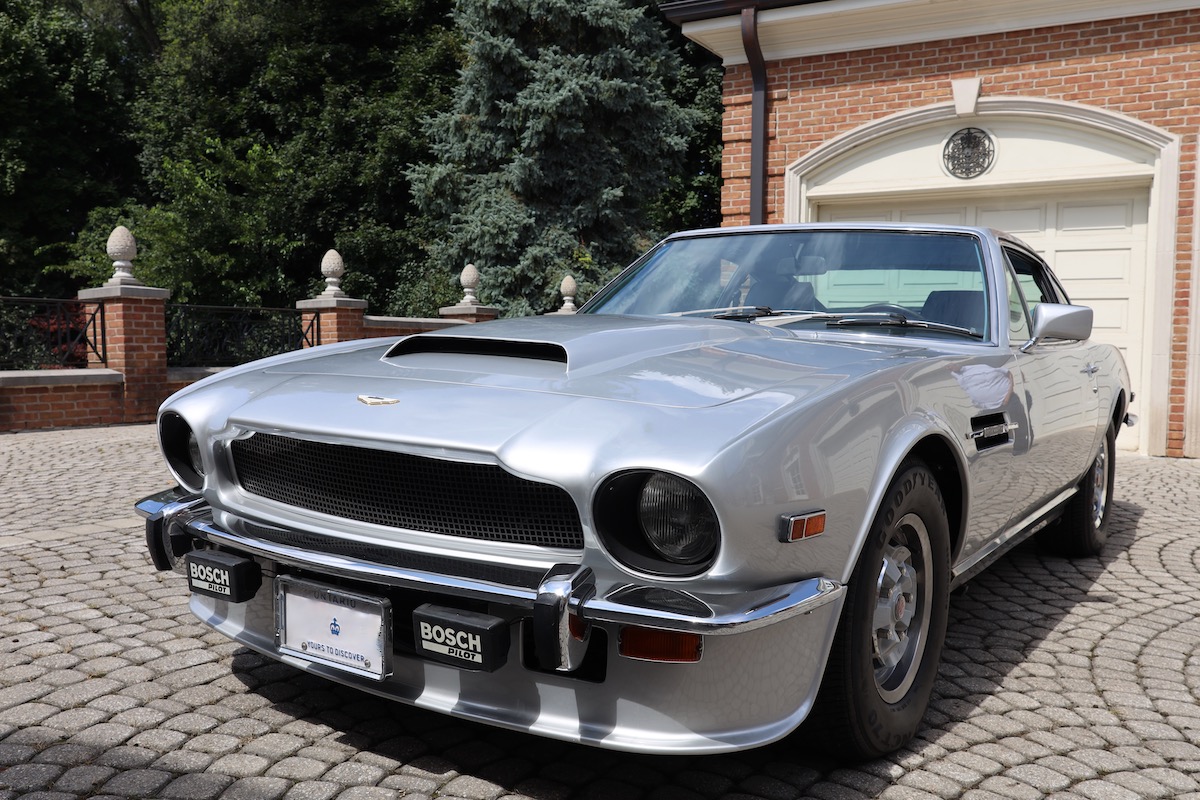
FOR SALE: 1978 Aston Martin AMV8
More information on the listing page.

Car clubs and car shows are among the many things that make up Canada’s car culture. These gatherings occur from one part of the country to another, bringing together enthusiasts who want to express their love for automobiles. Such events are suitable for all people interested in cars regardless of whether they have been in this field for a long time or not. Let us look into what makes up the vibrant Canadian automotive community and its peculiarities.
Car Shows: The Heartbeat of Car Culture
This regularly held event is the pulse of every car culture in Canada. The show receives all sorts of vehicles at different stages of development; some still exist in their original forms, while others have undergone modifications over time, thus becoming unique pieces altogether. It also acts as a meeting point for individuals who share similar interests and want to swap stories about anything related to cars – be it an old model or new generation automobile.
Situated in Toronto, this is by far the largest automotive showcase across North America. Such a title comes nothing short of featuring world premieres from major OEMs (Original Equipment Manufacturers), concept cars that steal everyone’s attention, as well as classic vehicles that never go out of style anyway! Anybody interested enough should visit here because it offers them the opportunity to stay informed about what’s trending within the automotive industry globally, something you won’t find anywhere else until 2025, when more technologies shall have emerged alongside other innovations, too.
Since its inception back in the 1920’s, Vancouver has always maintained the status quo by hosting one of the top-tier auto shows year after year without fail. Many people flock there just to see how designers manage to create displays so stunningly beautiful and yet packed full of educational information, too! In addition, visitors can touch and feel the most exotic cars currently available on the market while also getting a chance to interact with experts in various fields concerning automobiles, including manufacturers’ representatives themselves!
Local Car Meets and Shows
Big-name events are not the only thing that makes up Canada’s car culture; many cities host smaller meets where people can gather and share their passion for automobiles with like-minded individuals from around the province. There is always something going on every weekend somewhere in this great country of ours. Whether it’s muscle cars or vintage, there will be an event near you!
The significance of car shows must be considered when discussing the Canadian automotive community. These events bring together people who are passionate about vehicles but may have different backgrounds and experiences related to cars. Individuals can display their machines side by side and exchange stories regarding them while also appreciating the craftsmanship invested into making old models still look new today, or even vice versa.
Internet Forums and Social Media Groups
The use of internet forums and social media groups is necessary for linking hobbyists together over large distances. Reddit, Facebook, or even just specialized automotive websites are places where people can have lively conversations about everything from how to fix a car to planning car shows in different provinces. By creating these “virtual communities,” enthusiasts can connect with others who share their interests regardless of geography.
Local Car Meets and Cruises
The local car meets and cruises give a more personal touch to the car community by allowing members to meet face-to-face with other local owners. These events range from early morning coffee meet-ups in parking lots to organized road trips across state lines; they’re all meant to bring like-minded individuals together.
Formula 1 in Canada: A Highlight of the Year
Talking about Canadian car culture without mentioning Formula 1 would be criminal. The Canadian Grand Prix, held annually in Montreal, is one of the most iconic races on the Formula 1 calendar, attracting fans from around the world every year. The race weekend itself spills energy into the city as cars zip through streets-turned-circuit at unfathomable speeds, creating an electric atmosphere that captures both diehard fans’ hearts as well as those who may not know much about motorsports but happen upon it during their visit – this event has something for everyone!
But what does it mean for us car guys? Well … everything! The 2024 Canadian Grand Prix provided some of the best racing action seen all season long while also serving as a showcase for what modern automobiles are capable of when pushed beyond their limits – there really is no other sport quite like it.
Did you know that betting sites offer odds on Formula 1 events? If you want to add some excitement to your experience, check out the bet365 bonus code Canada, which will give you exclusive offers and insight into who’s favored to win each race. Betting on races not only enhances the viewing experience but also allows us to engage with our favorite drivers and teams in a whole new way – definitely worth considering next time!
As cliché as it sounds, cars really do bring people together, and nowhere is that more evident than in the Canadian car scene. Whether attending a large auto show or simply joining up with friends for your weekly cruise night at Tim Hortons, there truly is something for everyone within this passionate community.
if you haven’t already done so, I highly recommend getting involved! Dust off those project cars sitting in storage and start wrenching, polish up the old hot rod and hit some shows, or even just grab your buddies and go for a drive – whatever you choose to do, know that it’ll be one hell of an adventure filled with memories that’ll last lifetimes.

Hosted annually at Bronte Creek Provincial Park (just west of Toronto) by the Toronto Triumph Club, British Car Day features over 1000 beautiful classic cars, bikes and buses.
This show is of interest to any level of enthusiast or those just plain curious. It’s totally relaxed, bring your car, truck or bike, it’s not a snooty Concours.
Are you buying at British Car Day? We can help by providing professional appraisal services.
If you are new to classic car buying or are looking for a set of experienced eyes and ears to augment your own, Give us call. We are ready to help, our fees are more than reasonable!
British Car Day
September 15th, 2024
Bronte Creek Provincial Park
Oakville Ontario
(Map)
We have a tremendous amount of experience in selling estate assets, ask us for more details.
